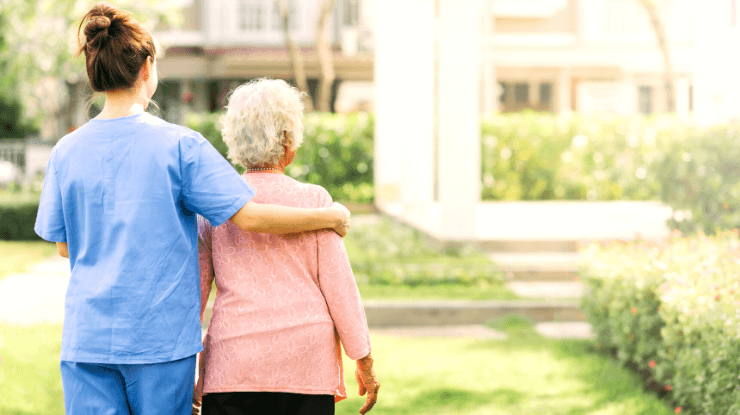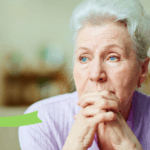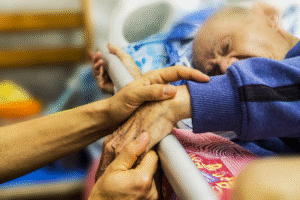
Falls are the leading cause of injury, both fatal and nonfatal, for people aged 65 and older. Falls can result in serious injuries, such as head trauma and broken bones. However, most falls are preventable. Below, we outline the steps and signs to look out for to help prevent falls in the future.
Diet & Exercise
As we age, our bones lose strength and become brittle, ultimately increasing the risk of breaking a bone. Therefore, it is crucial to stay active and eat healthy. A well-balanced diet and routine exercise will keep your bones, joints, and body happy!
A Well-Balanced Diet
“Milk will make you big and strong.” We’ve all heard it since we were kids. And it still holds true as we age. Milk contains a large amount of calcium which will keep your muscles and bones strong. While milk is still a great source of calcium, green leafy vegetables, fish, orange juice, yogurt, and other dairy products are also foods packed with calcium.
Vitamin D will also keep your bones and muscles strong by allowing the body to absorb calcium effectively. And you guessed it — you can increase your Vitamin D intake by solely getting some sun! Other good sources of Vitamin D include salmon, tuna, egg yolks, liver oil, and dairy products.
Another layer of protection for your body is protein. Protein helps build and repair body tissue. It is essential for preserving bone and muscle mass as we age. Protein-rich foods include chicken, eggs, fish, meat, legumes, nuts, and tofu.
Make sure to stay hydrated! Drinking plenty of fluids can prevent dehydration, which can cause dizziness, lack of coordination, and confusion — overall, a leading cause of falls. Additionally, if taking diuretics (“water pills”) or other medications, it is paramount to stay hydrated.
Consult your doctor or dietitian to discover the proper amounts of protein, calcium, Vitamin D, additional supplements, and overall calorie, fluid, and nutrient intake for your body to maintain a healthy weight and strong bones.
Staying Active
It’s not realistic to completely prevent a fall. However, staying active and exercising with a focus on balance and strength training can reduce your risk of falling overall. For older adults, motions, and movements like squatting, getting up from bed or a chair, and walking may become difficult. Practicing and exercising these motions can improve balance, muscle memory, and overall body mechanics. Here are some exercises to practice. We also recommend implementing yoga, stretching, weight training, aerobics, walking, or other low-intensity activities into your daily routine to train your body, concentration, muscle memory, focus, and balance.
Safe Home & Environment
The most crucial factor in helping prevent falling is to ensure your home and frequently traveled areas are free of hazards.
- Examine your home for possible hazards and eliminate any items in your walking paths, such as rugs, cords, pet toys, etc.
- Replace any loose or damaged rails to your stairs and steps.
- Install railings on both sides of your stairway if possible.
- Install strong grips or handles by your shower, bathtub, and toilet.
- Use non-slip mats in your bathtub and shower.
- Wear non-slip shoes or socks when not in carpeted areas
- Improve lighting around your home.
- Install nightlights or motion-activated lights for nighttime
- Store frequently used items in cabinets and drawers within arm’s reach.
- Avoid and repair any cracks or shifted concrete in your outdoor spaces.
In-Home Care
The safety and reassurance of having another person in assistance is a great safety measure for fall prevention. Caregivers can assist in daily activities such as getting dressed, bathing, cooking, monitoring medication, and more. Their assistance helps reduce the risk factors associated with falling.
A Place At Home offers a variety of services that can be personalized to fit any need. Our care plans are created by a qualified professional and delivered by a compassionate team of caregivers.
When you choose A Place At Home, you work with a team of qualified, compassionate care professionals who will ensure the highest standards of care are met. Your safety is our top priority.
Learn more about the ins and outs of home care on our blog — Read More.
If you or a loved one are seeking care, click here to learn more about our services.






